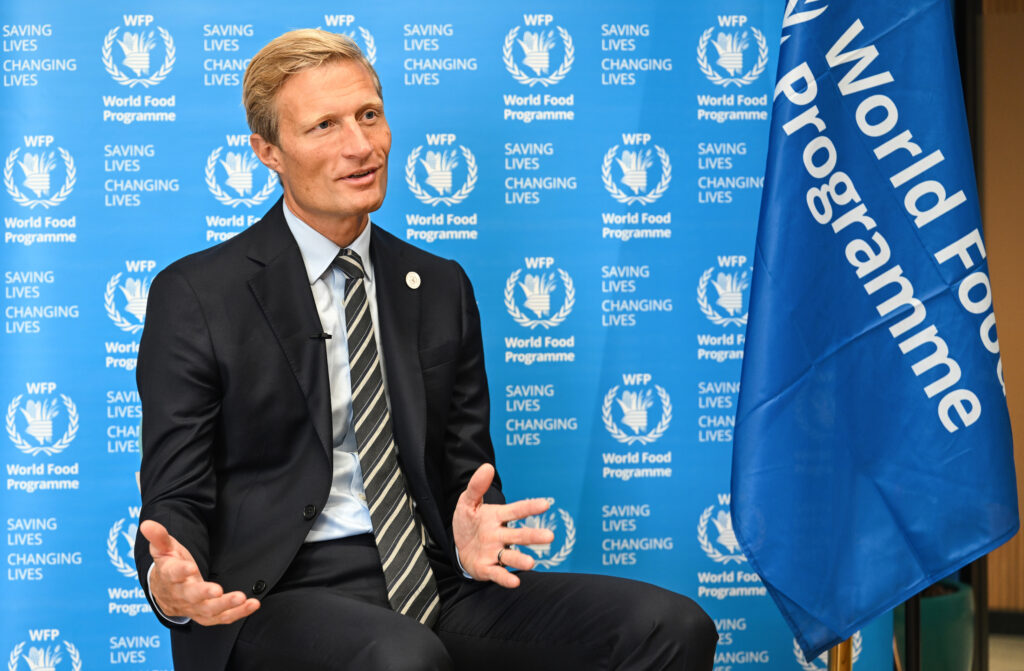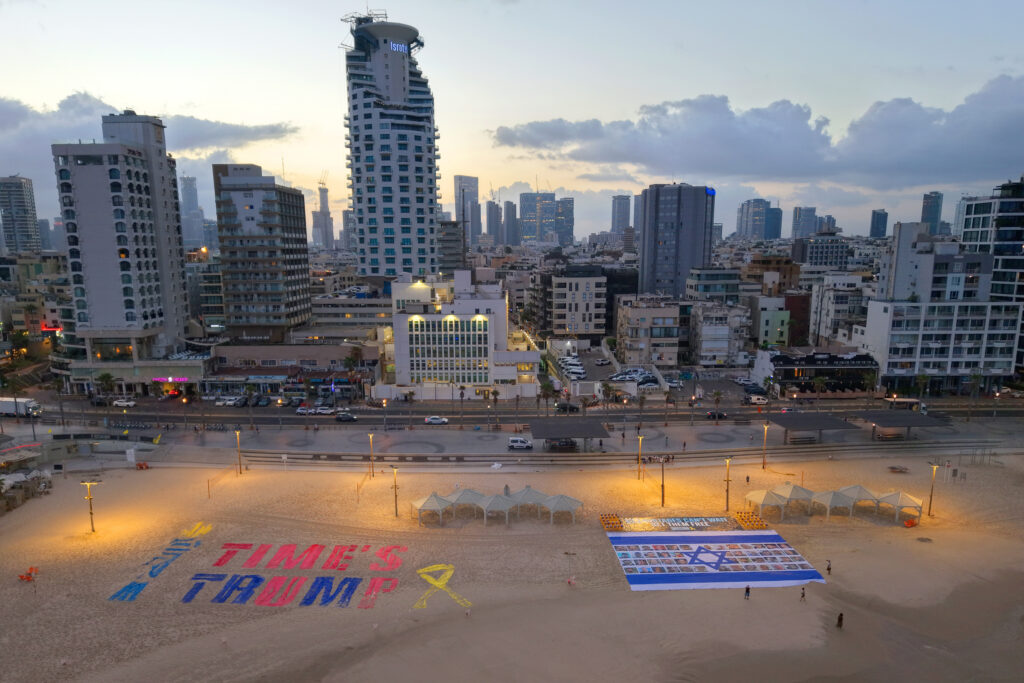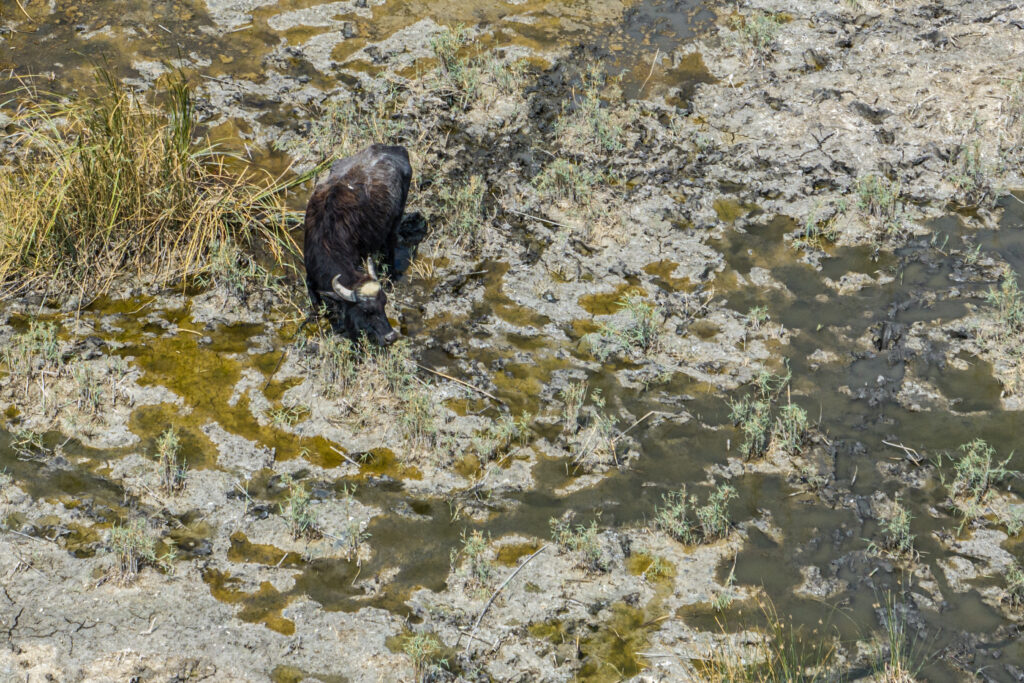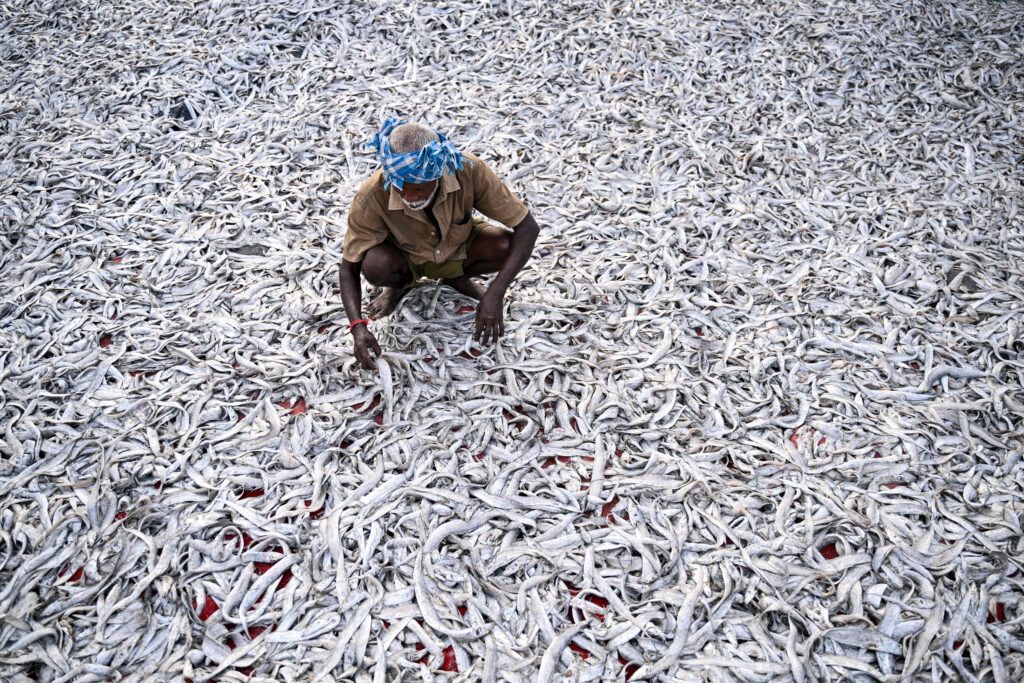AFP Asia Business
Aid to famine-struck Gaza still ‘drop in the ocean’: WFP
The World Food Programme warned Tuesday that the aid Israel is allowing to enter Gaza remains a “drop in the ocean”, days after famine was formally declared in the war-torn Palestinian territory.The United Nations declared a famine in Gaza on Friday, blaming the “systematic obstruction” of aid by Israel during its nearly two-year war with the Palestinian militant group Hamas.Carl Skau, WFP’s chief operating officer, said that over the past two weeks, there has been a “slight uptick” in aid entering, averaging around 100 trucks per day.”That’s still a drop in the ocean when we’re talking about assisting some 2.1 million people,” Skau told AFP during a visit to New Delhi.”We need a completely different level of assistance to be able to turn this trajectory of famine around.”The Rome-based Integrated Food Security Phase Classification Initiative (IPC) said famine was affecting 500,000 people in Gaza.It defines famine as when 20 percent of households face extreme food shortages, more than 30 percent of children under five are acutely malnourished, and there is an excess mortality threshold of at least two in 10,000 people a day.Skau painted a grim picture of Gaza.”The levels of desperation are so high that people keep grabbing the food off our trucks,” the former Swedish diplomat said.”And when we’re not able to do proper orderly distributions, we’re not sure that we’re reaching the most vulnerable — the women and the children furthest out in the camps,” he said. “And they’re the ones we really need to reach now, if we want to avoid a full-scale catastrophe.”- ‘Starvation phase’ -But Skau also warned that Gaza was only one of many global crises, with multiple famine zones emerging simultaneously as donor funding collapses.Some 320 million people globally are now acutely food insecure — nearly triple the figure from five years ago. At the same time, WFP funding has dropped by 40 percent compared with last year.”Right now, we’re seeing a number of crises that, at any other time in history, would have gotten the headlines and been the top issue discussed,” he said.That includes Sudan, where 25 million people are “acutely food insecure”, including 10 million in what Skau called “the starvation phase”.”It’s the largest hunger and humanitarian crisis that we probably have seen in decades — since the end of the 1980s with the Ethiopia famine,” he said.”We have 10 spots in Sudan where famine has been confirmed. It’s a disaster of unimaginable magnitude.”He detailed how a UN aid convoy in June tried to break the siege by paramilitary Rapid Support Forces (RSF) of Sudan’s city of El-Fasher in Darfur, only for the truck convoy to be hit by a deadly drone attack.Neighbouring South Sudan is also struggling, he said, suggesting “there might well be a third confirmation of a famine”.”That will be unprecedented”, he said, citing “extremely expensive” operations in the young nation’s Upper Nile state, where, with few roads, aid must be delivered by helicopters or airdrops.”This is maybe the number one crisis where you have on one hand staggering needs and, frankly, no resources available”, he said.At the same time, traditional donors have cut aid.US President Donald Trump slashed foreign aid after taking office, dealing a heavy blow to humanitarian operations worldwide.”We are in a funding crunch, and the challenge here is that the needs keep going up”, Skau said.While conflict is the “main driver” of rising hunger levels, other causes include “extreme weather events due to climate change” and the economic shock of trade wars.”Our worry is that we are now cutting from the hungry to give to the starving,” he said.Skau said the organisation was actively seeking new donors.”We’re engaging countries like India, Indonesia, Brazil, and others, beyond the more traditional donors, to see how they can also assist”.
Israeli protesters call for hostage deal ahead of cabinet meeting
Protesters calling for an end to the war in Gaza and the return of hostages being held there took to the streets in Israel on Tuesday morning ahead of a security cabinet meeting scheduled for the evening.Demonstrators blocked roads in Tel Aviv, where they waved Israeli flags and held up pictures of the hostages, according to AFP journalists on the ground. Israeli media reported others rallying near a US embassy branch in the city, as well as outside the houses of various ministers across the country. “Prime Minister (Benjamin) Netanyahu prioritises the destruction of Hamas over releasing the hostages,” said Ruby Chen, whose son was abducted by militants in October 2023. “He believes it is OK and it is a valid alternative to sacrifice 50 hostages for political needs,” he added, addressing one of the gatherings on Tuesday.The agenda of the security cabinet meeting has not been officially disclosed, but local reports suggest it could be to discuss renewed negotiations for a ceasefire and hostage release deal.The cabinet approved in early August a plan for the military to take over Gaza City, triggering fresh fears for the safety of the hostages and a new wave of protests that has seen tens of thousands take to the streets. Netanyahu last week ordered immediate talks aimed at securing the release of all remaining captives in Gaza, while also doubling down on the plans for a new offensive to seize Gaza’s largest city. That came days after Hamas said it had accepted a new ceasefire proposal put forward by mediators that would see the staggered release of hostages over an initial 60-day period in exchange for Palestinian prisoners held by Israel.- Journalists killed -Israel has been under mounting pressure both at home and abroad to wrap up its campaign in Gaza, where the war has created a humanitarian crisis and devastated much of the territory.On Monday, Israeli strikes hit a Gaza hospital, killing at least 20 people, including five journalists working for Al Jazeera, the Associated Press and Reuters, among other outlets.The United Nations, NGOs and world powers including staunch Israeli allies all expressed shock at the attack.Netanyahu later expressed regret over what he called a “tragic mishap”, and the Israeli military ordered an initial inquiry into the strikes. The ongoing war in Gaza has been one of the deadliest for journalists, with around 200 media workers killed over the course of the nearly two-year Israeli assault, according to press watchdogs.The war in Gaza was sparked by Hamas’s October 2023 attack on Israel, which resulted in the deaths of 1,219 people, mostly civilians, according to an AFP tally based on official figures.Out of 251 hostages seized during Hamas’s 2023 attack, 49 are still held in Gaza including 27 the Israeli military says are dead. Palestinian militants also hold the remains of an Israeli soldier killed in a 2014 war.Israel’s retaliatory offensive has killed at least 62,744 Palestinians, most of them civilians, according to figures from the health ministry in Hamas-run Gaza that the United Nations considers reliable.
‘The marshes are dead’: Iraqi buffalo herders wander in search of water
Like his father, Iraqi buffalo herder Watheq Abbas grazes his animals in Iraq’s southern wetlands, but with persistent drought shrinking marshland where they feed and decimating the herd, his millennia-old way of life is threatened. “There’s no more water, the marshes are dead,” said 27-year-old Abbas, who has led his buffaloes to pasture in the marshland for the past 15 years.”In the past, the drought would last one or two years, the water would return and the marshes would come back to life. Now we’ve gone without water for five years,” the buffalo herder told AFP.This year has been one of the driest since 1933, authorities have said, with summer temperatures topping 50C across Iraq, which is particularly vulnerable to the effects of climate change. The UNESCO-listed swamplands in the country’s south — where tradition has it that the biblical Garden of Eden was located — have sustained civilisations dating back to ancient Mesopotamia.But the unrelenting dry spell has reduced the mythical waterways to a barren land of cracked earth, stripped of the slender reeds that once dominated the landscape.Abbas and tens of thousands of Iraqis like him who rely on the marshes — livestock herders, hunters and fishermen — have watched helplessly as their source of livelihood evaporated.At the Chibayish marshes, scarce water still fills some channels, which authorities have deepened so that animals like Abbas’s 25 buffaloes could cool off.For years, he and his herd have been on the move, heading wherever there was still water, in Chibayish or in the neighbouring province of Missan.- ‘Battle for water’ -But it has become an increasingly challenging feat. Last year, seven of his animals died.Just recently Abbas lost another of his buffaloes which drank stagnant, brackish water that he said had “poisoned it”.The drought has been brought about by declining rainfall and soaring temperatures that increase evaporation. But upstream dams built in Turkey and in Iran have dramatically reduced the flow of the Tigris and Euphrates rivers in Iraq and exacerbated the effects of climate change.With the Iraqi government forced to ration water supply to ensure the country’s 46 million people have enough to drink and to meet agricultural needs, the marshes appear to be at the bottom of their priorities.”There’s a battle for water” in Iraq, said environmental activist Jassim al-Assadi, from the Nature Iraq NGO.He was among a group of activists and engineers who two decades ago sought to re-flood 5,600 square kilometres (about 2,160 square miles) of marshland.They were part of the areas that Saddam Hussein’s government had drained in the 1990s to chase out Shiite Muslim militants sheltering there.Today, only 800 square kilometres of the marshes are submerged, Assadi said, with many residents leaving the dried-up region.The ecosystem of the marshes is also suffering irreversible damage, with turtles, otters and migratory birds among the victims.”We used to have 48 species of fish but now only four remain, and from 140 species of wild birds we are now down to 22,” said veterinarian Wissam al-Assadi.- ‘We have nothing else’ -In collaboration with a French agriculture and veterinarian NGO, he helps treat the buffaloes, which in summer typically need be in the water for 14 hours a day and drink dozens of litres to avoid heat exhaustion.But the reduced water flow means “the water does not renew, and salinity and pollution levels increase,” the veterinarian explained.”Animals that used to weigh 600 kilos (1,300 pounds) are now 400 or 300 kilos, their immune systems weaken and diseases multiply,” he added.The Mesopotamian water buffaloes now produce one-third of their usual output of milk, which is used to make cheese and geymar, a thick clotted cream that is a popular breakfast food in Iraq.A UN report issued in July warned that “without urgent conservation measures”, the buffalo population was “at risk of extinction”.Citing water scarcity as the cause, it said their numbers in the marshes have gone from 309,000 in 1974 to just 40,000 in 2000.Towayeh Faraj, 50, who has lived in the hamlet of Hassja in Chibayish for the past two years, said he has been wandering the marshes for three decades to find water for his buffaloes.”If the livestock is alive, so are we,” he said.”We have nothing else: no salary, no jobs, no state support.”He has 30 animals — down from the 120 he began his career with, selling many off one-by-one to buy fodder for the remaining herd.Faraj inherited the profession from his father, but the family tradition might end with him. His eldest of 16 children works for a Chinese oil company, and another is a minibus driver.
Indian readies for punishing US tariffs
Indian exports to the United States will face some of the highest tariffs in the world this week, barring a last-minute reversal from President Donald Trump. Trump has tied issues of war and peace to trade, threatening to slap 50 percent duties on New Delhi in retaliation for its continued purchases of Russian oil — which …




